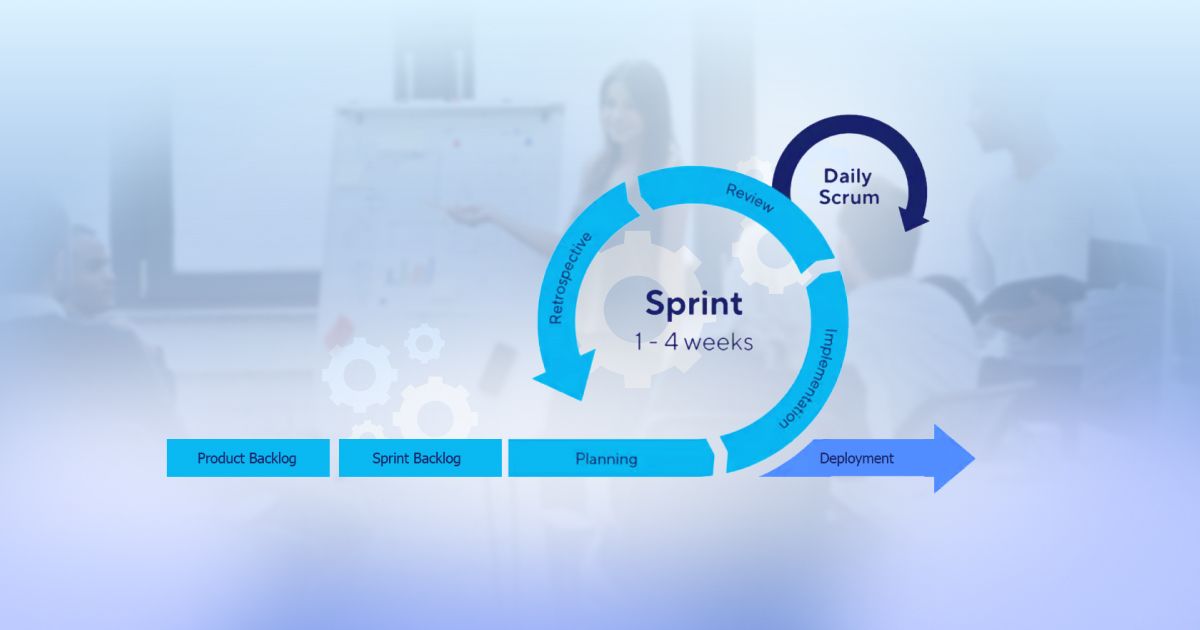Finding the Right Match: When Scrum Works Best
Have you experienced a meeting in which somebody asserted that "this approach is incompatible with the current task due to its dissimilarities"? For newcomers, it’s a head-scratcher. The question arises in your mind about why the selected methodology got chosen. Software development features a contradictory situation which suggests this welcome message.

Project methodology selection resembles picking suitable footwear because marathon runners need appropriate shoes beyond flip-flops (bearing in mind daredevils' style). Organizations must select from a variety of project methodologies which include Waterfall, Agile, Scrum, Kanban, DevOps together with various other models that both present advantages and disadvantages and particular characteristics. Scrum functions as Agile's favorite methodology yet it shows successful results only within specific projects. The following discussion explains what constitutes successful implementation of Scrum.

Projects That Love Scrum
1. Complex with Unclear Requirements
Scrum proves most effective in situations featuring unclear requirements like those experienced while being half asleep at first dawn. Sprint-based work breakdown enables you to solve problems during implementation. The approach can be described as creating an aircraft while maintaining flight operations although the method is high-risk yet thrilling.
2. High-Risk, High-Reward
Do you need bleeding-edge technology or innovative concepts? Scrum enables you to detect failures and learn new information more efficiently. This approach suits those who wonder about using artificial intelligence in specific situations. Scrum enables your organization to experience rapid learning as it facilitates speedy failure detection. The approach suits individuals asking themselves about using artificial intelligence for specific tasks.
3. Customer-Centric Goals
Scrum functions as a method to attract customer satisfaction. Regular feedback helps prevent the construction of incorrect products so they do not appear yet another time. The methodology is suitable for applications and websites and any interactive digital product.
4. Big Projects, Small Pieces
Got a monster project? Break it into bite-sized chunks. Scrum delivers functional development increments on a regular basis which prevents the problem of revealing the entire product after eighteen months.
5. Fast-Moving Markets
Scrum provides adaptability in sectors where constant change is the main factor. Scrum remains a solid choice for industries like FinTech and healthcare alongside emerging sectors whose standards are currently being established.
6. Never-Ending Development
Scrum works ideally with evolving projects such as SaaS platforms because of its iterative methodology. The agile Scrum model enables teams to repair bugs currently while they design fresh functionalities ahead of controlling the global market in the coming week.
7. Cross-Functional Chaos
The Scrum framework provides excellent results when organized teams of developers together with designers and QA engineers need to be directed. Through daily stand-ups the team stays in alignment while retrospectives provide solutions to current problems.
8. Quick Deliverables
Short timelines? Scrum stands as the preferred solution for startups because it focuses on delivering high-value work assignments. The delivery of powerful Minimum Viable Products occurs rapidly through this methodology.
Why Scrum Isn’t Always the Hero
Scrum would be an excessive approach for projects that demand strictly fixed requirements. Working without autonomy or Limited experience in agile practices leads teams to similar swimming difficulties as wearing buoyancy aids in deep ocean waters. Waterfall would provide better results when dealing with projects having set requirements.
Scrum methodology does not fit well with estimation of costs and fixed budget management systems. The constant evolution of requirements makes the cost variable. Scrum highly depends upon customer feedback because delayed feedback will make the process unsuccessful.
The Secret Sauce
Scrum works best when
- Work is iterative with manageable chunks (a.k.a. sprints).
- Collaboration is constant, with regular feedback loops.
- You embrace flexibility and the inevitability of change.
- Stakeholders are engaged and not just nodding along on Zoom.
Final Thoughts
People mistakenly view Scrum as a mystic solution yet understand it to work like a flexible multitool. Scrum serves projects well when the work follows unexpected directions because it adapts easily and remains flexible. The success of Scrum depends on committed teamwork along with repeated experiments for progress.
Scrum serves projects that evolve in complexity because of its adaptable nature. Although Scrum offers great advantages it should not be relied upon to fix all challenges since all superheroes possess weaknesses.
We can help!
Mvps - A Silver Bullet In Software Development
#Customapplicationdevelopment
The Green Revolution: A Tale Of Technology Giants Striding Toward Sustainability
#Customapplicationdevelopment
Diversity And Inclusion In Tech: Boosting Employee Retention Strategies
#Customapplicationdevelopment




